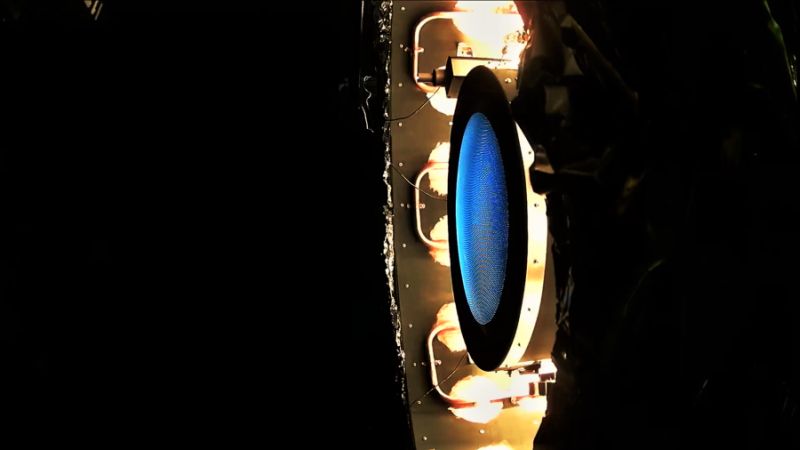The idea of an asteroid approaching and impacting the Earth may seem like a Hollywood plot that belongs on the silver screen, but the reality is that NASA is investing today in a planetary defense program that could prevent such a catastrophe in the future.

Animation of the DART Spacecraft approaching a small moon orbiting Asteroid Didymos. Photo Credit: NASA/Johns Hopkins Applied Physics Lab
The DART project, which stands for Double Asteroid Redirection Test, is an effort led by NASA’s Planetary Defense Coordination Office and managed by the Johns Hopkins University Applied Physics Laboratory (APL) with support from other industry partners. Propelled by Aerojet Rocketdyne propulsion after launch, the DART spacecraft will deliberately crash into a moonlet (small moon) orbiting asteroid Didymos to demonstrate the ability to “knock” a hazardous asteroid off of its current trajectory, preventing a potential impact of Earth.
The asteroid Didymos was selected for the test in part because of its smaller orbiting moonlet, which is close in size to those asteroids most likely to pose a threat to Earth. Once the DART spacecraft crashes into the moonlet, the impact should change the moonlet’s speed and orbit around Didymos, demonstrating the test objective without endangering the Earth.
Aerojet Rocketdyne is the sole propulsion provider for the DART spacecraft, supplying the primary chemical propulsion system as well as the demonstration solar electric propulsion system, NEXT-C (NASA Evolutionary Xenon Thruster – Commercial). NEXT-C is a next-generation solar electric propulsion system based on mission-proven technology developed by Aerojet Rocketdyne and NASA’s Glenn Research Center.

NEXT-C thruster during thermal vacuum testing at NASA’s Glenn Research Center
The NEXT-C system recently completed acceptance and integration testing, and is now ready to be installed into the spacecraft. The integrated test of the actual thruster and power processing unit that will fly on the DART mission ran approximately 12 days, concluding Feb. 1. Aerojet Rocketdyne ran the integrated test at NASA Glenn with participation from partners NASA, APL and ZIN Technologies.
“Successfully completing acceptance and integration testing of the first full system is a huge milestone for the NEXT-C program,” said Aerojet Rocketdyne’s NEXT-C Program Manager Jack Fisher. “We’re exploring higher thrust NEXT-C variants for other applications and support of additional NASA science missions down the line.”

The above DART mission schematic shows the impact on Didymos’ moonlet. Photo Credit: NASA/Johns Hopkins Applied Physics Lab
With a successful in-flight test of this next generation of ion engine technology, DART may make use of NEXT-C for spacecraft maneuvers to demonstrate the potential for application to future NASA missions.
DART is set to launch July 2021 from Vandenberg Air Force Base, California, intercepting Didymos’ moonlet in late September 2022. For more information on Aerojet Rocketdyne’s Solar Electric Propulsion programs, visit https://www.rocket.com/innovation/solar-electric-propulsion-systems.

